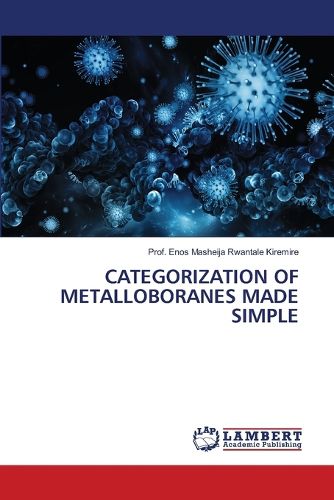Readings Newsletter
Become a Readings Member to make your shopping experience even easier.
Sign in or sign up for free!
You’re not far away from qualifying for FREE standard shipping within Australia
You’ve qualified for FREE standard shipping within Australia
The cart is loading…






This title is printed to order. This book may have been self-published. If so, we cannot guarantee the quality of the content. In the main most books will have gone through the editing process however some may not. We therefore suggest that you be aware of this before ordering this book. If in doubt check either the author or publisher’s details as we are unable to accept any returns unless they are faulty. Please contact us if you have any questions.
A burning desire to understand the nature and constitution of chemical clusters developed around 2005. Accordingly, clusters such as metal carbonyls, boranes, hydrocarbons, zintl ions, golden clusters and others were analyzed and categorized. Arising from these studies, it was discovered that the main group elements follow the series S=4n+q where n= the number of skeletal elements in a cluster formula and q = numerical value that specifies the type of cluster series. On the other hand, the transition metal clusters were found to follow the series S=14n+q. Furthermore, the skeletal bonds that bind the skeletal elements together were found to be calculated from the equation K=2n-q/2. Deeper analysis of the clusters, led to the discovery of a very important parameter that the cluster valence electrons have the double capping cluster valence electron configuration K*=DzCy where Dz follows the 14n series and Cy follows the 12n series and z and y represent the number of respective skeletal elements which together add up to n. That is, z+y=n. Out of these relationships, two more important cluster valence equations were derived.
$9.00 standard shipping within Australia
FREE standard shipping within Australia for orders over $100.00
Express & International shipping calculated at checkout
This title is printed to order. This book may have been self-published. If so, we cannot guarantee the quality of the content. In the main most books will have gone through the editing process however some may not. We therefore suggest that you be aware of this before ordering this book. If in doubt check either the author or publisher’s details as we are unable to accept any returns unless they are faulty. Please contact us if you have any questions.
A burning desire to understand the nature and constitution of chemical clusters developed around 2005. Accordingly, clusters such as metal carbonyls, boranes, hydrocarbons, zintl ions, golden clusters and others were analyzed and categorized. Arising from these studies, it was discovered that the main group elements follow the series S=4n+q where n= the number of skeletal elements in a cluster formula and q = numerical value that specifies the type of cluster series. On the other hand, the transition metal clusters were found to follow the series S=14n+q. Furthermore, the skeletal bonds that bind the skeletal elements together were found to be calculated from the equation K=2n-q/2. Deeper analysis of the clusters, led to the discovery of a very important parameter that the cluster valence electrons have the double capping cluster valence electron configuration K*=DzCy where Dz follows the 14n series and Cy follows the 12n series and z and y represent the number of respective skeletal elements which together add up to n. That is, z+y=n. Out of these relationships, two more important cluster valence equations were derived.